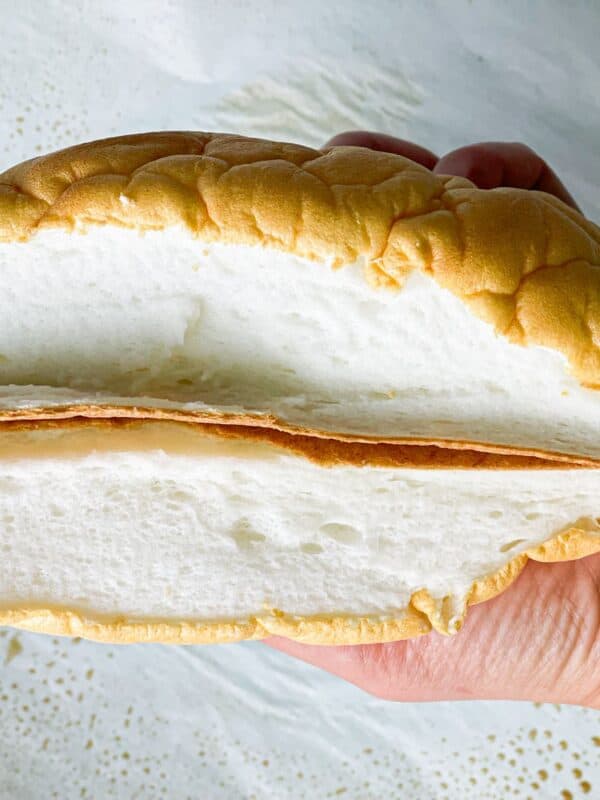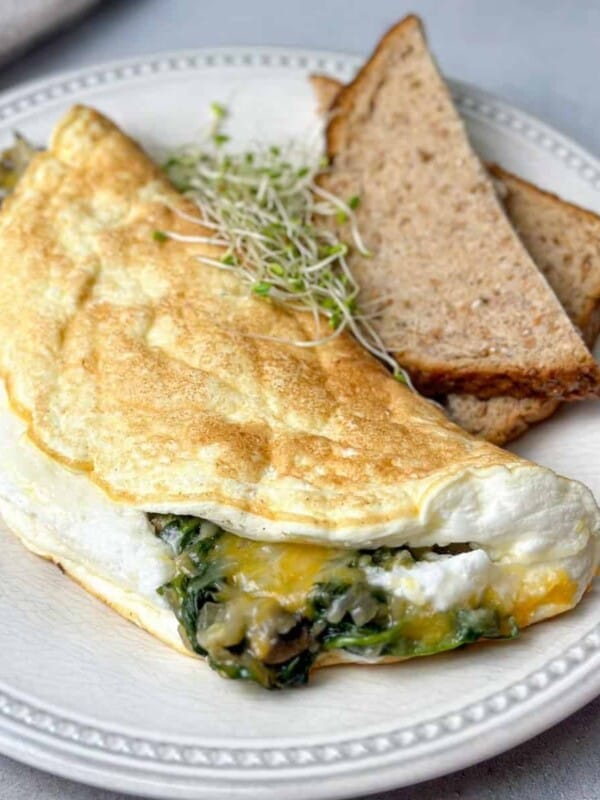This post may contain affiliate links. Please read our disclosure policy.
If you’re on a gluten-free diet or like to add some texture to your cakes, cookies, pancakes, and other baked goods, then you’ve got to learn How to Make Oat Flour at home.
Making oat flour at home is simpler than you think. Blending it takes less than a minute, and it’s so much cheaper than buying it at the store.
A Nutritious Whole Grain Flour
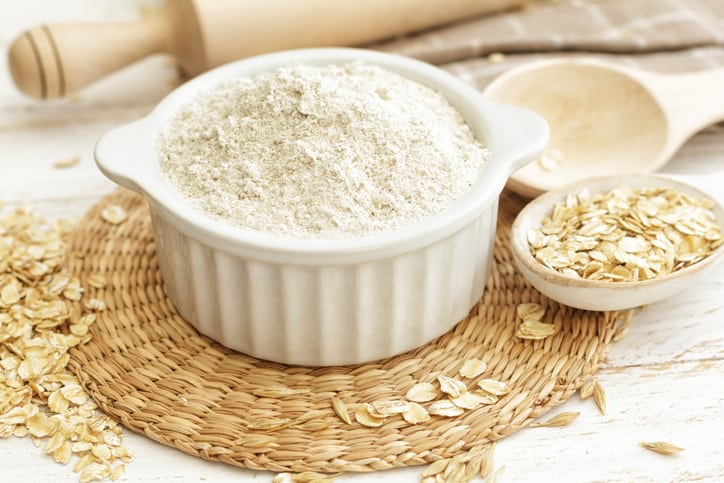
Oat Flour Benefits
Oat flour, like rolled oats, is high in fiber, vitamins, and minerals. It’s a nutrient dense source of carbohydrates, which means that while it’s still a carb like regular white flour, it’s packed with nutrients rather than empty calories.
Because oats are naturally gluten-free, they could be used as a gluten-free flour substitute. However, it’s important to note that oats are frequently cross-contaminated with gluten, so if you have an intolerance, make sure to buy gluten-free oats.
If you have celiac disease, it is critical that the oats you use are gluten-free and not processed in the same facility as other grains that do contain gluten.
What Do You Use Oat Flour for?
I’m sure you’re wondering what you can make with oat flour. Oat flour gives baked goods and other foods a nutty flavor and a hearty texture. Consider the following three uses for homemade oat flour:
- Baking: One of the most common uses of oat flour is in baking. Gluten-free oat flour can be used to make brownies, waffles, banana bread, chocolate chip cookies, and oatmeal cookies. Use baking recipes that are specifically designed for gluten-free baked goods.
- Oat milk: Use oat flour to make oat milk. Combine oat flour and water in a mixing bowl until the mixture is creamy and thick. When using oat flour instead of whole oats, the resulting oat milk is smoother and requires little to no straining. This is a good way to use up leftover oat flour from other recipes.
- Thickener: To thicken soups and stews, use oat flour instead of a roux or cornstarch slurry. Whisk in the dry oat flour or make a paste with it and water. In either case, constantly whisk the soup to avoid lumps.
Simple and Inexpensive
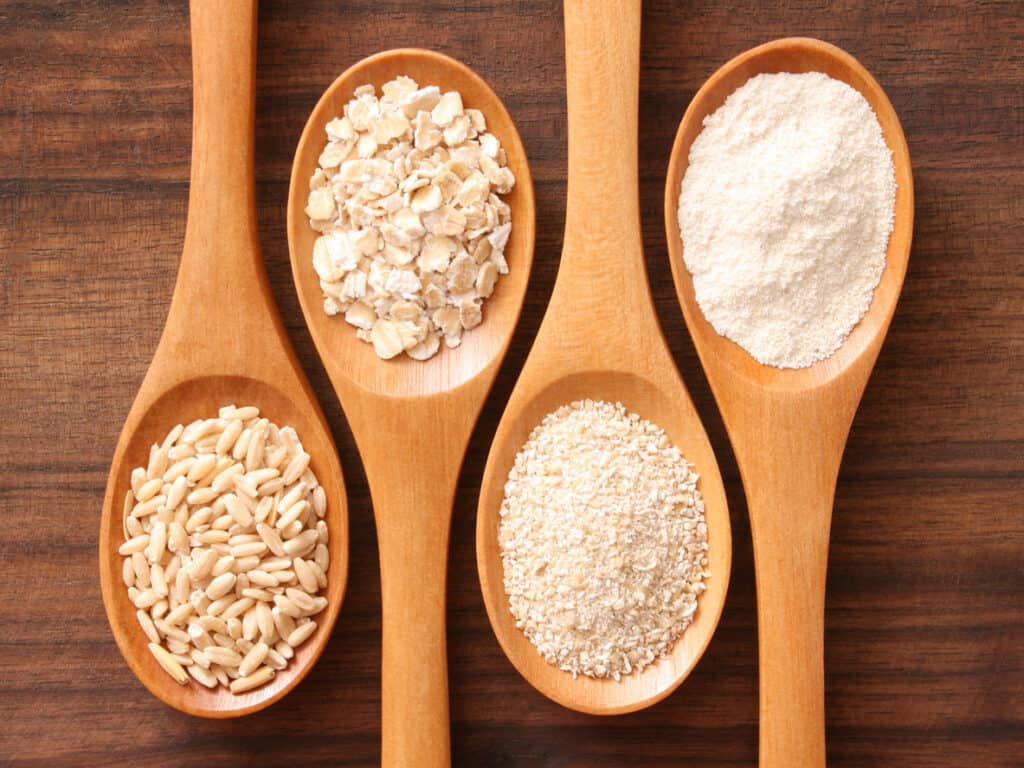
Difference Between Oat Flour and All Purpose Flour
Oat Flour contains 11% more fiber than white all-purpose flour, as well as iron, calcium, and potassium. Oatmeal fiber content also keeps you fuller for longer.
It’s gluten-free. This is great news for celiacs and those who avoid gluten, but it is bad news if you are making dough that needs to rise slowly, such as bread or pizza dough. Gluten is a stretchy protein that allows yeast to create air bubbles and volume in dough.
It imparts more flavor to baked goods than regular all-purpose flour. It also give baked goods a chewier and crumblier texture than all-purpose flour.
Can You Swap Oat Flour for All Purpose Flour?
Oat flour has a light texture and mild flavor similar to whole wheat flour, but it cannot be substituted for all-purpose flour one-for-one.
If a recipe calls for all-purpose flour, you can use oat flour in place of up to 25-30% of the regular flour and still get good results.
That being said, you can certainly experiment with home made oat flour in various recipes, but I recommend looking for recipes that specifically call for oat flour, especially if you’re new to using it.
Frequently Asked Questions (FAQs):
You can store your homemade oat flour in an airtight container for up to 8 weeks. It will also have a longer shelf-life if you pop it in the fridge.
Unfortunately, a 1:1 substitution of oat flour for all-purpose flour will not work. Instead, look for recipes that call for it.
Yes, if you use certified gluten-free oats. Although oats are naturally gluten-free, many are processed in facilities that also process wheat products. If you’re gluten-free, look for certified gluten-free oats, which are processed in wheat-free facilities and tested to ensure they’re gluten-free.
1 cup of whole rolled oats yields approximately 3/4 cup flour.
Pro Tips
- After blending the flour, sieve it to remove any oats lumps.
- Oat flour works wonderfully in recipes that call for eggs. Because it’s gluten-free, eggs provide the missing structure in a recipe.
- When baking with oat flour, allow the batter rest for some time so the ingredients meld together.
Homemade Oat Flour Ingredients
Making your own oat flour couldn’t be simpler! You will need whole rolled oats (not quick oats or steel-cut oats) and a food processor or high-speed blender are all you need.
How to Make Oat Flour
First, blend the oats in a blender or food processor until they form a fine flour, stopping occasionally to stir.
That’s all! Homemade oat flour can be used in any recipe that calls for oat flour. Remainings can be stored in an airtight container for up to 2 months in a cool, dry place.
More Hacks to Try:
- How To Store Celery?
- How to Clean & Store Veggies to Stay Fresh
- How to Peel Hard Boiled Eggs in Under 10 Seconds
- How To Peel Garlic In The Microwave!
- How To Measure Wet And Dry Ingredients!
- How To Reheat Old/Stale Bagels
- How To Store Spinach For One Month?
- How to Store Lemon and Lime for 3 Months
- How to Cook Whole Chicken in Instant Pot
- How to Cook or Roast Chestnuts
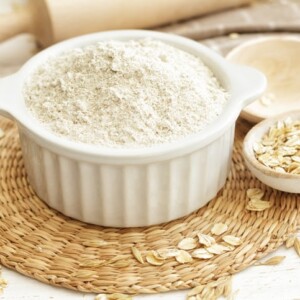
How to Make Oat Flour
Equipment
- food processor or high-powered blender
Ingredients
- 1 cup old fashioned rolled oats, quick oats
Instructions
- Place oats in a food processor or high-powered blender and process until finely ground into flour.



